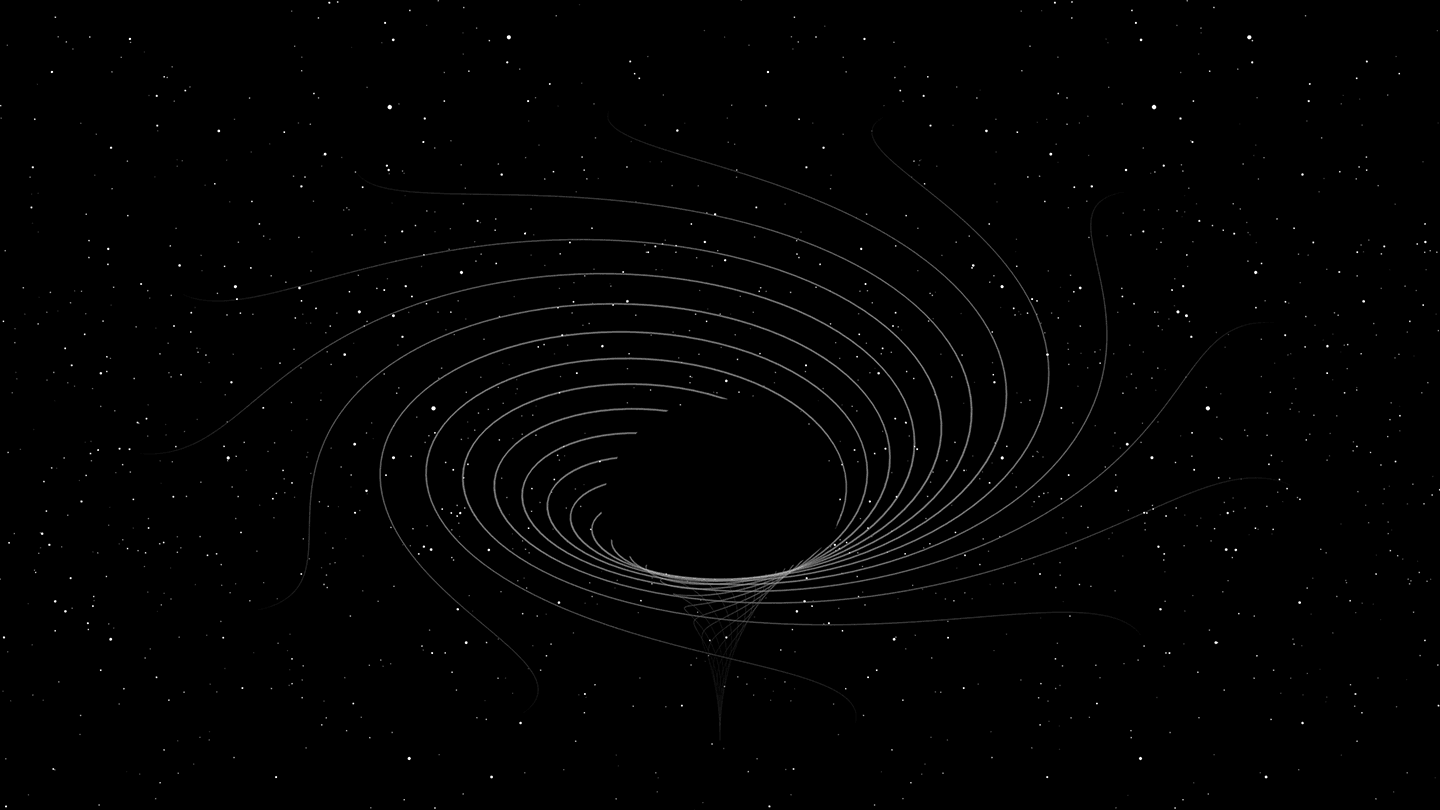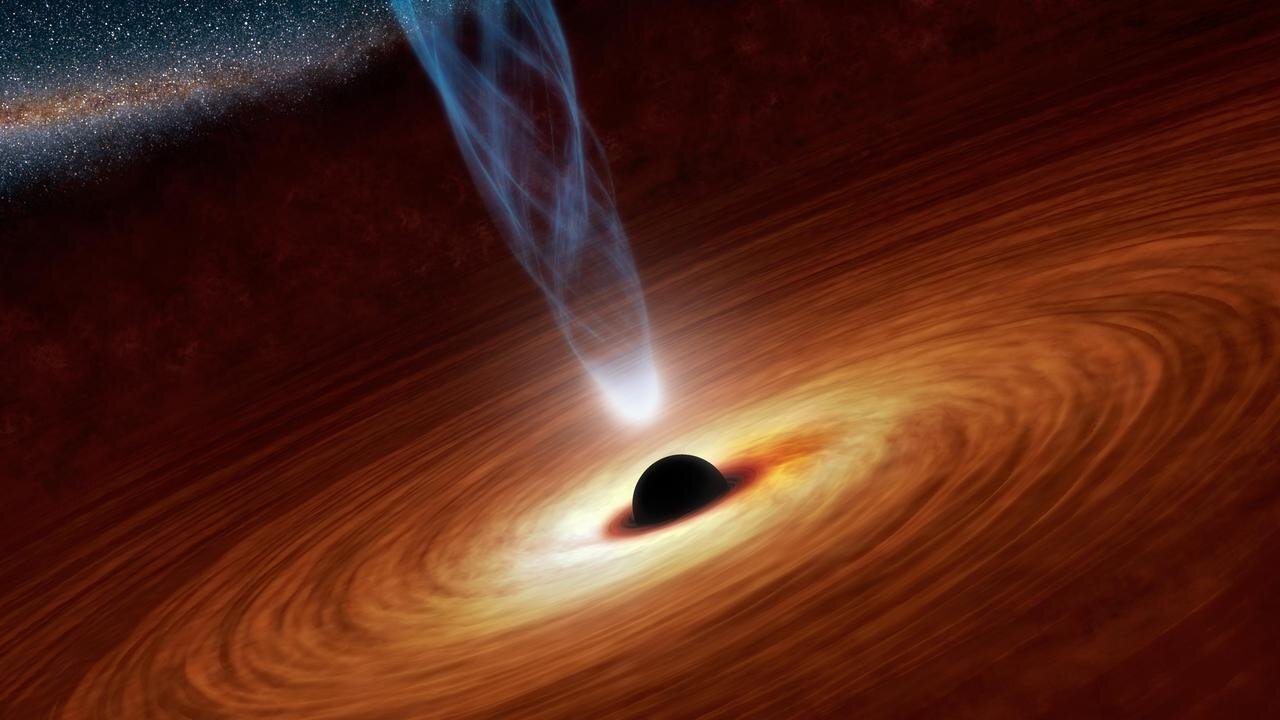215 million light-years away, an extremely bright flare of a star was silenced by the darkness of a supermassive black hole . Can a black hole do that to the Earth as well?
In a galaxy 215 million light-years away, astronomers observed a bright flare of a star being engulfed by a big black hole. This event has been regarded as the nearest tidal disturbance event (TDE) so far.
Supermassive black hole at the Milky Way Galactic Center
The event was spotted by an international team of astronomers with Matt Nicholl as their head at the University of Birmingham. For the first time in history, astronomers were allowed to bind the characteristic brightening of these events with swift outflows of material from stars from the observations.
In case a star wanders too close to the supermassive black hole which is at the centre of its galaxy, the star can experience tidal forces that surpass the gravitational forces holding the star together. Conclusively, the star will dramatically shred into thin streams of debris, through the process of spaghettification.
What is Spaghettification?
Despite what the name suggests, spaghettification is what happens when any matter in the space gets too close to a black hole.
Explaining the term with the example of a star being succumbed into the black hole recently, astronomer Edo Berger with the Harvard Smithsonian Center for Astrophysics said, “It is called spaghettification because the tidal forces from the black hole essentially stretch any object that gets near it into a spaghetti shape.”
Adding, “essentially what happens to the star is it comes close in, and it gets stretched out and torn apart into these long strands that look like spaghetti.”
According to him, these events are important as whenever a star is spaghettified, the black hole lights up, giving researchers an opportunity to observe how these bodies function under extreme gravitational duress.
As of now, there are two theories for extreme brightness. According to one, the brightness occurs as the material accumulates onto the black hole. Another states that they are a result of previous collisions between spaghettified streams.
The scientists have now been able to experience multiple TDEs every year but are still to determine the main reason as to why it happens.
In September 2019, two new surges of brightness were observed in a spiral galaxy. Through further calculations, Matt Nichol’s team concluded that light originated from a supermassive black hole which was as large as one million solar masses, as it engulfed a star with a mass similar to the Sun.
What is a black hole and can it destroy the Earth?
The National Aeronautics and Space Administration (NASA), defines a black hole as a place in space where gravity pull is so much that even light cannot get out. Due to the inability of light to get out, black holes are invisible.
Space telescopes with special tools are used by scientists to spot black holes. Black holes tend to emerge from the explosive demise of some very large stars.
There are four types of black holes – stellar, miniature, intermediate and supermassive.

The stellar-mass black holes form when very large stars collapse into themselves.
According to scientists, the sizes of black holes can vary at a very large rate. The smallest black hole can be as small as an atom and the biggest known black holes are known as ‘supermassive’ can have masses as big as one million suns put together.
It is also believed that the smallest black holes came into existence with the beginning of the universe, but how the formation of supermassive ones took place is still unknown. They could be a result of a merger of hundreds or thousands of tiny black holes. According to scientists, every galaxy has a supermassive black hole at the centre of it.
Many people believe that black holes move around space, consuming stars, planets, and moons but scientists have invalidated all these believes. According to them, earth faces no threat as no black hole has been discovered being close enough to our solar system so far.
NASA states, “even if a black hole the same mass as the sun replace the sun, Earth still would not fall in. Instead, Earth and the other planets would continue to orbit the black hole as they currently orbit the sun.”
But many questions have been risen about this faith of the scientists, like what happens to the light? If the sun is to be consumed, the light it will emit while being spaghettified, won’t that will be harmful to the life on earth?
Can a black hole effect the earth from afar?
NASA also states, “Some supermassive black holes launch powerful beams of material, or jets, away from them, while others do not. Astronomers may now have identified why.”
According to the scientists, jets ejected from the supermassive black holes can emit huge amounts of energy into their surroundings and strongly affect the evolution of other environments in the process. Previously, scientists observed that to emit strong jets, a supermassive black hole needs to be spinning rapidly. But recently it was found out that not all rapidly spinning supermassive black holes drive jets.
A study conducted to understand the position of jets in the black holes found that there is another way of determining whether a supermassive black hole consists of jets or not. It can be determined with something called a black hole corona, which is threaded by magnetic fields.
(Picture credit: NASA/CXC/M. Weiss)
The study states that if a supermassive black hole has a black hole corona which is bright in X-rays, only then it will have jets. If it does not have a bright black hole corona in the X-rays, it does not have jets too.
The term “corona” is often correlated with the outer atmosphere of the Sun in astronomy. But black hole coronas are the regions that diffuse hot gas which lies above and below a much heavier disk of material swirling around the gravitational sinkhole.
The closest known black hole to the earth is located about 1,000 light-years away in the southern constellation Telescopium. The black hole expectedly weighs in four times the mass of the Sun, which concludes that it is only about 7.5 miles (12 kilometers) wide.
As the scientists expect to have millions of more black holes in the galaxy, they have just found some dozens till now. As researchers continue their research to find more and more black holes, the distance between them and the Earth closes.
As scary it is, we may come to a point in some hundreds of thousands of years where we orbit a black hole and not the sun. Interesting, isn’t it?

